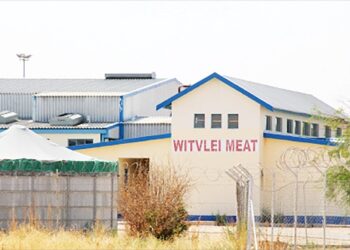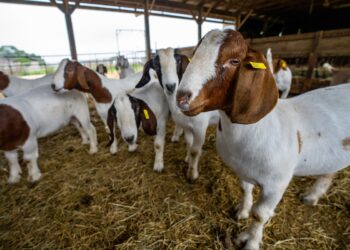
The use or role of urea is widely not well understood, apart from it being labelled as a risk to livestock. Urea is a Non-Protein-Nitrogen compound used in animal feeding to improve rumen function.
The digestive system of a ruminant animal is comprised of four stomach compartments, the rumen, abomasum, omasum, and the reticulum. Each of these compartments have specialized function in the process of digestion of the ingested feed. This process involves breaking feed particles into smaller particles, absorption of nutrients and water, and up to the parting of excrete from the feed.
The rumen is the principal compartment for fermentation of ingested feed. This fermentation or breakdown of food is performed by the microorganisms (bacteria and fungi) living in the rumen, referred to as “rumen microbesâ€. The efficiency of fermentation in the rumen depends on the efficiency of these rumen microbes, and the efficiency of the microbes depend on the levels of nitrogen, sulphur, and energy in the diet. Further, the effective use of urea depends on the population of rumen microbes and the energy content of the feed amongst others.
When urea enters the rumen, the microbes break it down to release ammonia (a gas) which they then convert it into protein, known as “microbial protein†which the microbes use as their food to grow and multiply, thus, enhancing their performance in terms of digestion and improving rumen function. Therefore, urea is needed during the dry season to help animals digest the dry forage materials effectively. Much of the urea in licks/feed is utilized by the microbes than by the animal body itself.
Urea becomes a problem when the ammonia released by urea is in excess and cannot all be converted into protein by the microbes. This ammonia is transported to the liver for detoxing and excretion (removed) from the body via urine. When this Ammonia is too much for the liver, then toxicity takes place. This happens when there is insufficient fermentable energy in the feed to help the breakdown of urea or when the feed contains a significantly high crude protein already. Therefore, it is very important to feed the correct amount of urea to animals and to provide or mix urea-containing lick supplements according to instructions, and to consult animal nutritionist or livestock experts.
On the other hand, urea is also a problem when not carefully handled at farm. When urea is not thoroughly mixed, has formed lumps, the animal is at risk of ingesting too much at an instant. A tablespoon of urea can be potent enough for the animal. Urea dissolves easily in water, thus, if the animal drink such water, it will be poisoned. It is therefore advisable to avoid giving urea supplements when it is raining, and not to expose the lick trough to moist conditions or water accumulation.
The onset of symptoms after ingested of urea can be from 30 minutes to 3 hours depending on the amount ingested amongst others. The symptoms of urea poisoning include muscle twitching, frothy salivation, incoordination, spasms, bloat, abdominal pain, rapid breathing and weakness amongst others. The most basic and available remedies for treating urea poisoning is water and vinegar. For cattle, a mixture of vinegar (750ml) and a 1L of water and for sheep and goats, a half bottle of vinegar and half a litre of water given orally.
Lastly, provide the right supplements at the right time to the right animal in the right amount. Supervise the mixing and provision of lick supplements, and always observe the behaviour and conditions of animals, especially at feeding. Provide urea supplements (Protein and energy licks) during the dry season, and mineral supplements (phosphate licks) during the rainy season.
*Erastus Ngaruka is the Technical Advisor: Livestock & Rangeland at Agribank











